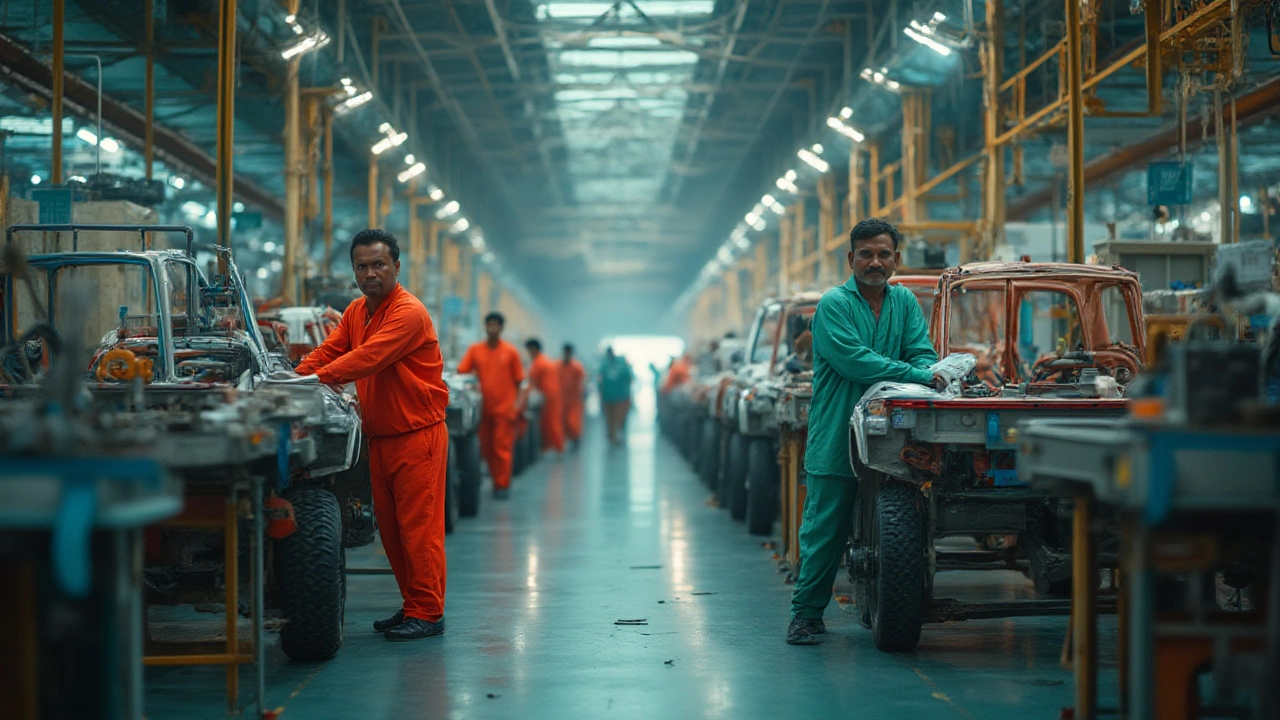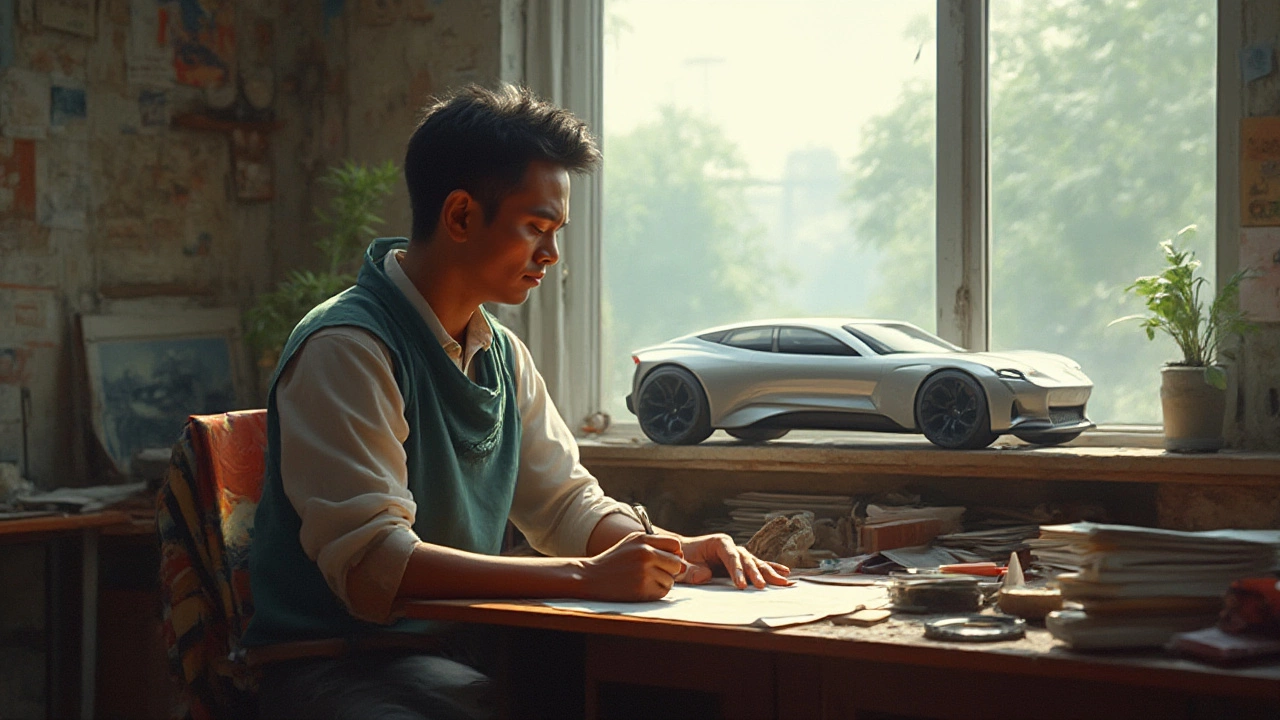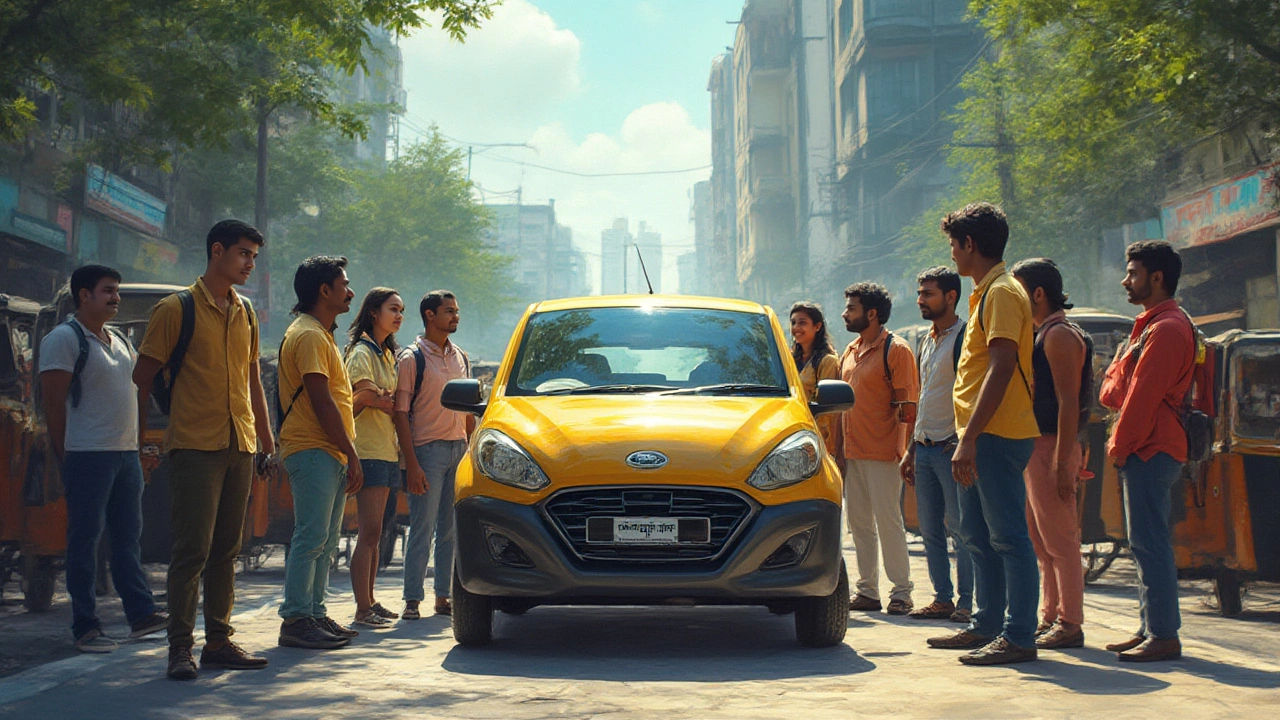
Picture this: you’re stuck in usual Dhaka traffic, honking and sweating, when someone mentions, “Hey, did you know there's a Bangladeshi-made car?” You’d probably raise an eyebrow. Of all things, a car made in Bangladesh seems like a stretch, right? Bangladesh is famous for textiles, footballs for FIFA, even ships, but cars? Turns out, the story is both more interesting and ambitious than you might guess. With floods, power cuts, and endless crowds, building cars from scratch seems almost impossible—yet it’s not just a dream. Let’s roll down this less-traveled road to see what’s going on under the hood when it comes to cars made in Bangladesh.
The Road So Far: Car Manufacturing in Bangladesh
First, let’s get the basics out of the way. There is technically a car "made in Bangladesh"—but it isn’t what most people outside the country picture when they think of Toyota or Ford. Bangladesh does not currently mass-produce its own line of passenger vehicles from the ground up, but the wheels have been turning slowly for years now. Back in 1966, an industrial company named Pragoti Industries Limited (PIL) opened its doors in Chittagong. They've been around for more than half a century, which is no small feat in a market where imported used SUVs clog every street. Pragoti has never managed to become a full-blown car brand, but they famously assembled vehicles for international names like Mitsubishi, Tata Motors, Mahindra, and Ashok Leyland. Mostly trucks and microbuses—but that’s not nothing.
Pragoti’s assembly operations work like this: they import the major parts—engines, chassis, transmissions, and body panels—from their partners abroad. In Chittagong, their technicians bolt everything together, finish it off, and send it out for sale. By 2020, Pragoti had assembled more than 60,000 vehicles. That’s pretty wild to think about: over 60,000 cars and commercial vehicles carrying the emblem of "assembled in Bangladesh." But, if we’re picky, “assembled” isn’t the same as “made.” There’s no Bangladeshi Tesla just yet, dreamers. For now, it’s a lot of parts shipped in and snapped together locally—but the know-how and workers involved are completely homegrown. There's skill, sweat, and some genuine pride packed into each vehicle.
Here's what might surprise you: there was a bolder attempt to make an actual Bangladeshi car brand—meaning, a company putting its own original model on the road. The project was called “Bangladesh Automobile Industry Limited” (BAIL). In 2019, they made headlines with their plan to launch a homegrown car dubbed “Made in Bangladesh” by 2022. They even set up a factory near Mirsarai, aimed at producing everything from sedans to SUVs. BAIL wanted to target everyday family buyers—like me, running Sienna and Jasper Jr. to football practice—who could never afford big imports. Unfortunately, as of my last peek through the newsfeeds up to June 2024, the ambitious BAIL project has yet to deliver a true mass-market, locally designed car. Bureaucracy, funding woes, and global supply turbulence (think COVID-19 and fallout from global chip shortages) threw up roadblocks.
And if anyone tells you Bangladesh’s car industry is a dud, point out the quiet explosion of locally fabricated three-wheelers and “easy bikes.” These little battery-powered taxis zip around everywhere. True, they aren't strictly "cars"—but they’re being made, bodied, wired, and painted in Bangladesh, pushing over 500,000 units per year. They might not win awards for safety or style, but they fill a real need.
If you want a snapshot, check this out:
| Company | Operation Type | Main Products | Year Started |
|---|---|---|---|
| Pragoti Industries | Assembly (CKD/SKD) | Trucks, Microbuses, Commercial Vehicles | 1966 |
| Bangladesh Automobile Industry Limited | Attempted Own Brand (Domestic) | Planned Passenger Cars | 2019 |
| Local Workshops | Manufacturing & Assembly | Three-wheelers, Easy Bikes | 2000s |
So, what’s the verdict? Bangladesh has no homegrown sedan that rivals the Corolla yet. But thousands of vehicles are assembled on home turf and the next leap might not be as far off as it seems.

Challenges on the Road: What’s Holding Bangladesh Back?
If you ask any auto industry geek, they’ll tell you building cars is brutal. You need top engineers, monster-sized investment, rows of suppliers, orchestrated logistics, ruthless efficiency, and—oh yes—a market that wants your car. In Bangladesh, each of those things is tough to pull off. Take the money part: setting up even a basic car factory can gulp down several hundred million US dollars before a single car leaves the plant. Local banks balk at loans that big, and foreign investors get cold feet thanks to bumpy politics or changing rules.
Then there’s the market itself. Private car ownership in Bangladesh is tiny—about 3 cars per 1,000 people, compared to over 700 cars per 1,000 in Australia. Most families squeeze together on public buses, or cram six folks into a three-wheeler. The lower demand for cars means you can’t get the economy of scale needed to build cars cheap enough to win over buyers.
Regulations, too, tilt the field in favour of imports. For decades, Bangladesh slapped high taxes on brand-new imported vehicles, making it almost impossible for the average family to buy new. Instead, used Japanese cars—think of the ever-present Toyota Axio—land at half cost and sell out fast. Why innovate when the used market is set?
On top of all this, the supply chain just isn’t there yet. Car parts have to be sourced globally—engines from Japan, wiring from India, glass from China. That makes “made in Bangladesh” more of a patchwork unless local industries catch up. Local auto part makers do exist, building batteries, tires, glass, and some wiring looms. But they’re tiny compared to giants like Malaysia’s Proton or India’s Tata.
Then, let’s talk people. To build a car from zero, you need thousands of workers, from blue-collar welders to PhDs in robotics. Bangladesh’s universities have some great engineering talent, but luring them away from IT and other big-paying industries is a struggle. Retaining that talent at home—when lucrative jobs in Singapore or the Middle East beckon—is a major hurdle. If we want a Bangladeshi Corolla, we need folks who’ll design, test, and build it here, not abroad.
Lastly, there’s a cultural challenge. For many families, a car is still seen as a luxury, not a necessity. The roads, too, are unpredictable—a pothole today, waterlogged tomorrow. Building sturdy, affordable cars for these conditions isn’t the same as whipping up four wheels for the autobahn. It requires thoughtful, ground-level design, and not all big global automakers know how to crack that code.
Don’t lose hope, though. Pragoti shows what’s possible—a skilled workforce, local assembly, and the slow build-up of know-how. The local three-wheeler business is nimble, innovative, and stubbornly effective. The electric vehicle revolution is also knocking. Bangladesh’s streets are covered in plug-in rickshaws and buses. Local entrepreneurs sense an opening; if there’s anywhere ripe for skipping straight to cheap electric family cars, it just might be here. There are even local startups importing Chinese EV parts and slapping on a “Made in Bangladesh” badge, plugging away beneath the radar.
If anything is clear, it’s that the next decade could look a lot different. But unless something changes in how cars are taxed, where parts are sourced, and how engineering talent is nurtured, Bangladesh will keep building in baby steps rather than giant leaps.

What’s Next? Dreaming of a Bangladeshi Car on Every Street
It’s easy to be cynical. But look at how far countries like Vietnam have come with companies like VinFast, or how Malaysia’s Proton went from assembling kits to designing their own cars. So why not Bangladesh? The country’s 170 million people are about to become one of the world’s 20 biggest consumer markets. That’s a huge crowd—all aiming for a better standard of living. Every year, more people move up into the middle class. At some point, the clunky used imports won’t cut it anymore. People will want cars that fit their lives, wallets, and roads.
The government noticed. In 2022, the Ministry of Industries announced a draft “National Automotive Policy” aiming to jumpstart local vehicle manufacturing. The plan? Cut duties for parts, encourage joint ventures, and support research and training. They want to lure big global brands to team up with local hands to create truly affordable, local vehicles. If the plan works, the country could see new car factories popping up outside Dhaka and Chittagong by the end of this decade.
Young entrepreneurs aren’t waiting. University kids, tinkerers, even taxi drivers—everyone in Bangladesh knows the country needs cheaper, greener cars. Online communities swap designs for locally built EV prototypes and low-cost solar-powered bikes. The country’s engineers are getting bolder, testing home-made electric pickups in rural towns. There’s even a start-up, Palki Motors, working out of a small garage in Dhaka, promising to deliver tiny, city-friendly EVs within the next five years. They’re realistic: the first ones will look basic, run on a handful of batteries, and ditch air-conditioning in favor of keeping the price low.
If it sounds small-time, remember: this is how every major auto nation started. Back in the day, Suzuki churned out little 360cc cars in Japan, and nobody took them seriously. Today, Suzuki is one of the world's top brands for small cars. With grit, policy help, and a growing pool of young builders, Bangladesh could pull off the same trick.
If you’re searching for the real lowdown—can you buy a car made in Bangladesh today? The answer’s still "not yet," but it’s closer than you think. You can hop on a locally assembled microbus, or ride an electric three-wheeler built in a Gazipur workshop. And one day, you might even pick up keys to a compact city car designed, built, and sold by your Bangladeshi neighbors. For now, watch this space—and maybe keep an eye out for some test models bouncing over those Dhaka potholes soon enough.